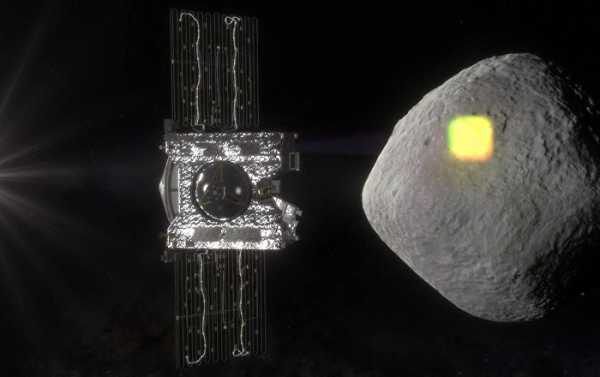
The US space agency NASA has released a series of photos from its Osiris-Rex spacecraft that shows a series of flybys of the 1,600-foot-wide asteroid Bennu.
The Osiris-Rex (Origins, Spectral Interpretation, Resource Identification, Security-Regolith Explorer) spacecraft arrived in orbit around Bennu, which orbits the sun between Earth and Mars, back in early December. The craft has a number of tasks on its highly important mission, including measuring Bennu’s size and trajectory with extreme accuracy, because NASA’s Jet Propulsion Laboratory gives Bennu a cumulative 1-in-2,700 chance of impacting Earth between 2175 and 2199, Sputnik reported.
Osiris-Rex also plans on collecting a sample from Bennu’s claylike surface and shipping it back to Earth, as NASA scientists believe the alien soil “may record the earliest history of our solar system. Bennu may contain the molecular precursors to the origin of life and the Earth’s oceans. Bennu is also one of the most potentially hazardous asteroids, as it has a relatively high probability of impacting the Earth late in the 22nd century,” the mission page notes.
In the month since its arrival, Osiris-Rex has performed a preliminary survey of Bennu, conducting three flyovers of the asteroid’s north pole and one each of its equator and south pole,” Osiris-Rex researchers said in a December 31 statement. “The data gathered during these flybys allowed the mission team to more precisely estimate Bennu’s mass so that the spacecraft could go into orbit around the asteroid.”
Those photos have been arranged into an animated video by the mission team.
At only 1,640 feet across, Bennu is the smallest body ever orbited by a spacecraft, according to Space.com, and its orbit is also the closest ever made around a small body, at only 1 mile above Bennu’s surface. That requires precise calculations, hence the probe’s careful, month-long preparation just to get situated for the close-in orbit, during which it will map the surface of Bennu and take precise measurements of its mass and trajectory.
However, only a week into Osiris-Rex’s mission, NASA announced it had already made an important discovery: “Data obtained from the spacecraft’s two spectrometers… reveal the presence of molecules that contain oxygen and hydrogen atoms bonded together, known as ‘hydroxyls,'” a December 10 press release said. “The team suspects that these hydroxyl groups exist globally across the asteroid in water-bearing clay minerals, meaning that at some point, Bennu’s rocky material interacted with water.”
Sourse: sputniknews.com






